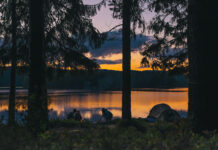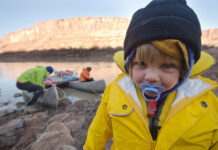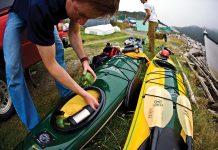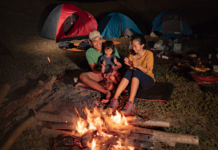Family camping trips are all about making s’mores and singing Neil Diamond’s ultra-classic “Sweet Caroline” around the campfire, right? We certainly hope so. Not everything always goes according to plan though, and even the most experienced campers can make silly mistakes. Whether you’re car camping or taking to the backcountry by foot, canoe or kayak, ensure your time outside is relaxing instead of aggravating. Learn from our past mistakes and avoid these easy-to-fix family camping missteps.
15 Family Camping Mistakes (And How to Avoid Them)
1 Leaving food in your pack
Everyone worries about the 400-pound hungry ursine that might come knocking in the middle of the night, and that’s a legitimate safety concern in bear country. Far more common however, is the chubby-cheeked, 19-gram field mouse that will scurry into camp and use its tiny teeth to chew through your fancy $400 canoe pack, all to get at the leftover nub of a forgotten Clif bar you didn’t really enjoy in the first place. Fortunately, many bear safe practices will help vermin-proof your gear.
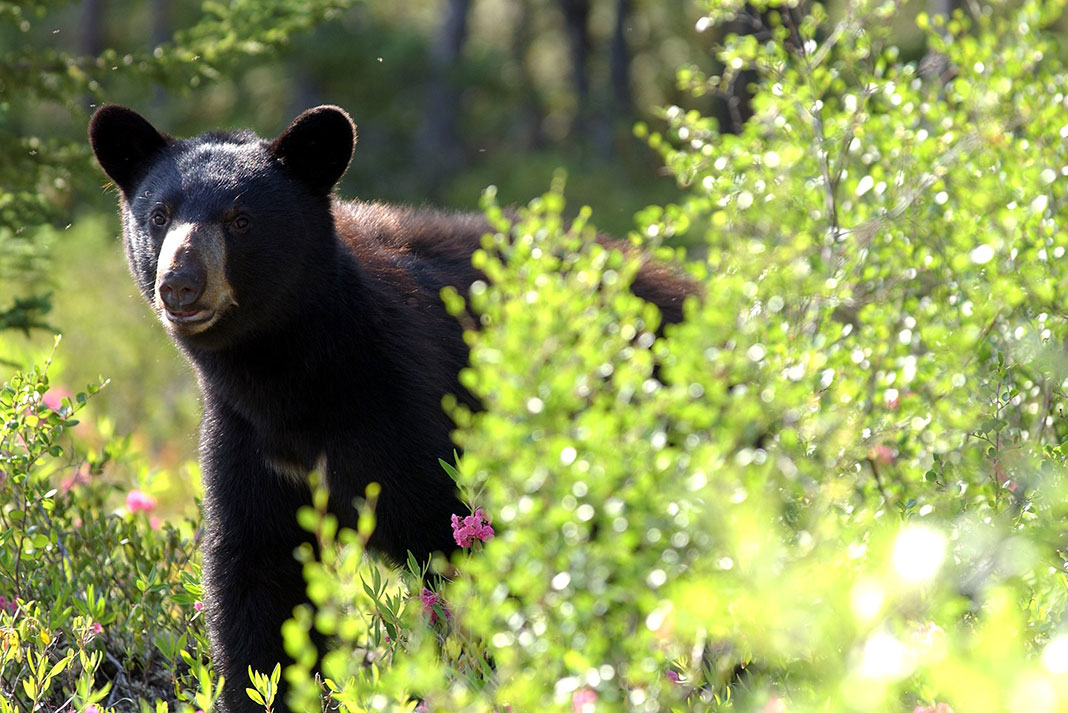
2 Not taking care of your gear post-trip
It sucks when you pull out gear for your next trip and it’s not been repacked properly or pieces are missing. “Have you seen the tent poles?” is not a question you want to ask at midnight when you roll into a sleepy riverside campground. Worse, gear that’s not cared for doesn’t last long. Damp gear rots, loses waterproofing and durability—plus, it smells. Forgetting to clean your water filter pump post-trip is a sure way to take the manufacturer’s claim of 10,000 clean liters pumped and reduce its output to nine measly trips. When you return home, wash and dry the gear that needs it before carefully storing it until next time.
3 Burying bear spray at the bottom of your pack
It can’t help you there, and can potentially be set off accidentally, coating your kitchen kit and other essential items in capsaicin. Bear spray is a great safety tool, but needs to be easily accessible to be useful. Easy-reach side pockets of packs might work well but even better is a purpose-specific holster. Pretend you’re in a spaghetti Western and practice drawing your piece from your chosen location— don’t get stuck asking the bear to stick ‘em up empty-handed.
4 Bringing weird, heavy things
On portage-heavy backcountry canoe trips, the Paddling Mag team has witnessed friends new to interior camping bring: four kinds of beans rehydrating in glass mason jars, five-pound citronella bucket candles to ward off mosquitoes, an exceptionally large portable Coleman gas heater for use inside a flammable nylon tent on a balmy September night, and several other questionable things. Safety concerns aside, huffing needlessly heavy items up and down portage trails is a quick ticket for many to wonder why anyone goes camping at all. Help your new-to-camping friends with a helpful list of essentials pre-trip.
5 Not making a list
Newbies aren’t the only ones to benefit from list making. “I’m 52. I don’t think I should check a list—I know I have to,” says canoeing guidebook author Kevin Callan. “It started out by forgetting small items, such as toothpaste and after dinner snacks. The moment I started forgetting T.P. and extra rations of whiskey is when I started making a list religiously.” It’s the only way to make sure you don’t leave something important behind.
6 Packing for an expedition on a weekend trip
Stop bringing so much stuff. If you’re packing enough gear to survive an apocalypse, then of course it’s going to seem like a lot of effort to get outside. Once you’ve looked after your needs for shelter, water and food, the rest is gravy. Pay attention to what gear is brought but not used and—unless it’s your rain jacket, first aid kit or another safety essential—leave it behind next time.
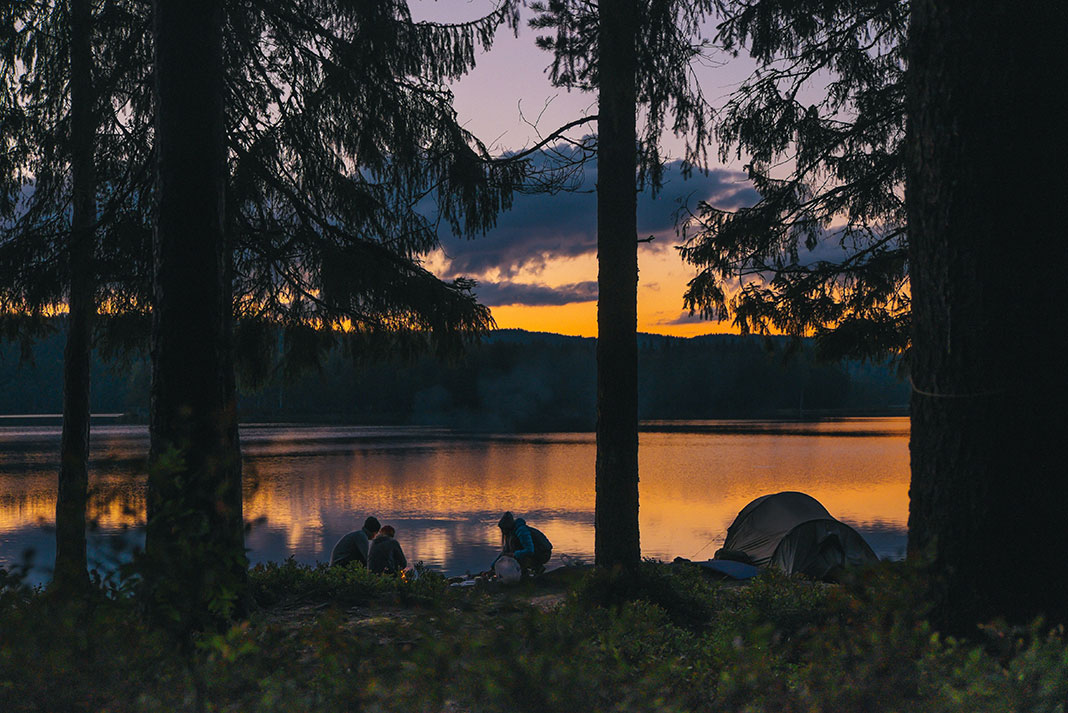
7 Forgetting the guide
Get a bird nerd or tree sleuth into their natural environment and they’re pointing out a spotted wood thrush and explaining that its Australian relative, the bassian, directs a stream of flatulence towards suspected earthworm sites to gas them out and then eat ‘em for dinner. Cool! And gross. Natural interpreters don’t come pocket-sized, but field guides do. Worth the $15 in the park office.
8 Relegating your adventures to long weekends only
The 100-mile, four-hour bumper-to-bumper crawl back to Urbania following a three-day statutory holiday weekend is enough to make anyone say, “We’re never going camping again.” Get out more often by mastering the lost art of the microadventure.
9 Not checking the weather report
Don’t cross your fingers and gamble on blue skies and balmy temperatures. The one-day temperature forecast is now accurate within two degrees—compared to within six degrees in 1972—according to the National Weather Service. Coming prepared will exponentially increase your enjoyment of any trip.
10 Checking the weather report
In his essay, “The Weatherman Is Not A Moron,” Nate Silver refers to a study of TV meteorologists in Kansas City that found when they said there was a 100-percent chance of rain, it failed to rain at all one-third of the time. Wet bias is well documented and refers to commercial forecasters overestimating the chance of rain. For example, a five-percent chance of rain may be reported to the public as a 20-percent chance. This is said to increase the usefulness of the forecast, but overstating the risk of rain is more likely to keep campers at home. Use weather reports to guide how to pack for a trip—don’t let it be the deciding factor in whether or not to go. Possible exceptions include: hurricanes, monsoons and volcanic lightning.
11 Walking around barefoot
The editorial office—half of them barefoot for the discussion—was divided on this point, but shoes protect your feet from all sorts of sharp and bitey hazards. For backpackers and backcountry campers, it’s better to minimize the risk of injury to your tootsies completely. No shoes, no service? We like to say no shoes, no epidermis. We’re trying to make that a thing.
12 Killing your campfire with too much, too soon
Patience you must have, young padawan. A sixth sense for fire-making develops with the more campfires tended. However, a good rule of thumb is that if you can get your hand within six inches of the fire without feeling extreme (read: painful) heat, it’s still too early to put on anything thicker than your forearm.
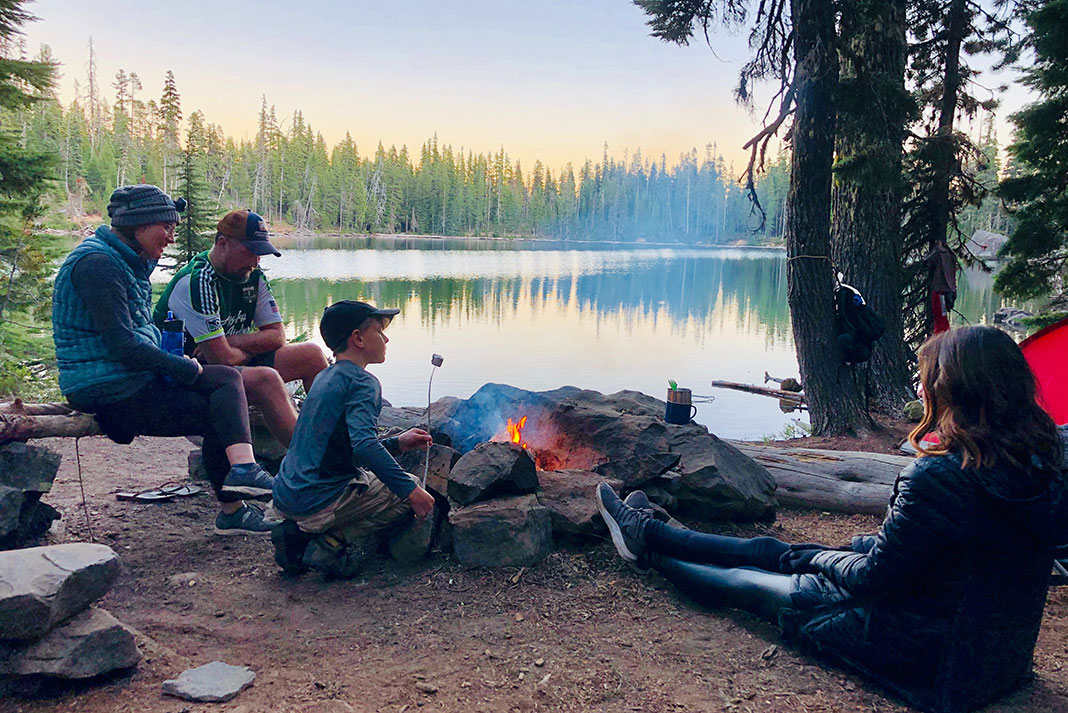
13 Improper axe usage
There are only two ways to avoid putting that axe blade in your shin—either good luck or proper form. We prefer relying on the latter. With a sharp blade, take a wide stance and swing the axe on an arc between your legs. Kneeling makes this safer. The aim is to create an arc for the axe blade that avoids every part of you. The longer the axe the safer your kneecaps are.
14 Waiting until your kids are older to start camping
“The best age to start kids camping is now,” says Bruce Kirkby, author, explorer and father of two. Along with his wife, Christine, and two boys, the Kirkbys have climbed mountains, traversed deserts and paddled remote rivers. Our favorite example: When their youngest was just four months old the Kirkbys flew to Georgia, bought a chesnut mare and spent two months traversing the Caucasus Mountains. “For parental sanity, try to avoid bugs, heat and severe cold. Like anything in life, start the way you want to continue. Getting them outside early is setting you up for years of healthy, outdoor family fun,” adds Kirkby.
15 Running out of whiskey
Don’t let it happen to you—especially if you brought the kids.
Learn from our past mistakes and avoid these easy-to-fix family camping missteps. | Feature photo: Andreas Rønningen/Unsplash
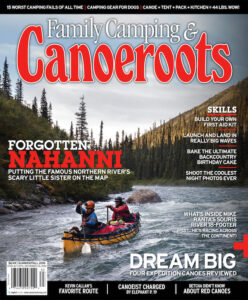
Subscribe to Paddling Magazine and get 25 years of digital magazine archives including our legacy titles: Rapid, Adventure Kayak and Canoeroots.



